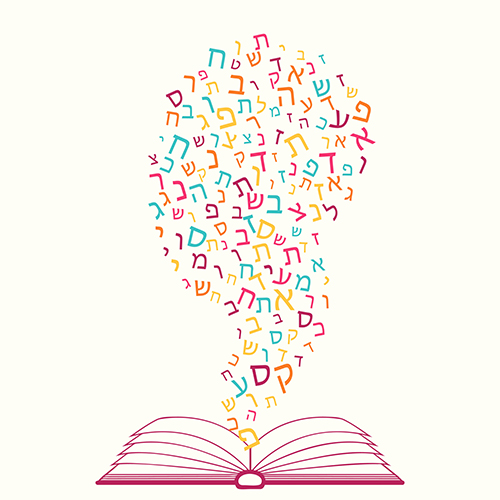4 Surprising Findings About Hebrew Language Learning

Dina Maiben directs the Hebrew program at Gratz College, where she is also a doctoral candidate focusing her research on the second language teacher education of Hebrew teachers. Her research has found some important insights. Here are the key takeaways.
Learning a language hardwires the brain, but second languages cannot be processed as effectively as the first language. Neuroimaging research shows that both first and second languages activate the same areas of the brain—the language centers in the left cerebral hemisphere—but the intensity and extent of the activation is not the same. The second language produces greater activation, suggesting that the brain must work harder to process it.
Authentic language is key to learning a second language. Methods such as Total Physical Response (or TPR) mimic how people naturally acquire their first language: aural comprehension before speech, reading and writing. The research shows that this in only effective if learners are exposed to language the way it is actually used by native speakers. What this means in reality for teachers is that, for example, they can incorporate novel verbs and actions (e.g., “hop to the door”— קְפֹץ\קִפְצִי\קִפְצוּ אֶל הַדֶּלֶת) using the imperative form. Using the infinitive form of the verb (“to hop”— לִקְפֹּץ) instead of the imperative forms (“hop! — קְפֹץ\קִפְצִי\קִפְצוּ!) may help teachers avoid dealing with the complexities of gender and number, but creates a false understanding of how the language works.
Effective language learning needs to take advantage of all four language skills: listening, speaking, reading, and writing. The research shows that reading and writing reinforce the aural and oral aspects of language and facilitate its acquisition.
Students benefit when decoding is taught in concert with oral Hebrew language. Research finds that providing students with meaningful reading and writing activities reinforces the oral language they are learning. In practice, this means making sure students are given texts to read that provide a balance between ease and challenge, are meaningful to them, and that build on what they have learned previously as they progress.
For the full interview with Dina Maiben, click here.
Don’t forget to subscribe to our newsletter and connect with us on social media!





